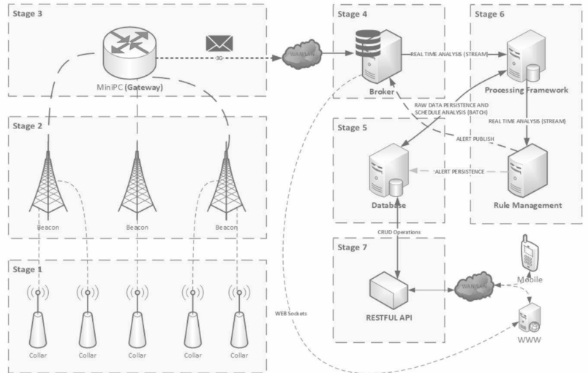The Internet of Things (IoT) has already become commonplace in cars and homes, and more recently the technology has infiltrated the agricultural space. Researchers are now exploring the use of an IoT system to manage and monitor animals in vineyards.
Viticulture is the cultivation of grapevines for making wine and can be extremely labor intensive. While vineyards historically used grazing sheep to remove weeds from the grape fields, machines and fertilizers have replaced them because of the difficulties of managing sheep for weeding. When grazing, sheep tend to eat both the weeds and the fruits, which hurts vineyard production. On the other hand, weeding machines erode soil while fertilizers can pollute it, so vineyards are in need of a more environmentally friendly solution. To address this issue, Universidade de Aveiro researchers designed the SheepIT system to monitor the feeding habits of grazing sheep through IoT sensors.
“The main goal of the SheepIT project is to create a mechanism to allow the use of flocks of sheep to weed vineyards instead of chemical or mechanical weeding solutions,” said Pedro Gonçalves, researcher from the Universidade de Aveiro. “In addition to this, the IoT system offers an advanced monitoring system to track each sheep’s location, presence and welfare.”
In the SheepIT system, each sheep in a flock is equipped with a posture control mechanism embedded in an electronic collar attached to their necks. The posture control mechanism conditions the sheep to be in a feeding position for weeds only, instead of a position where the sheep can eat the fruit of the vines or branches. Fixed nodes – also known as beacons – installed in the intended grazing area integrate all the collars into the IoT network. The beacons gather and merge data from the collars and then relay the combined data to an aggregating gateway.

Figure 1: Overall SheepIT architecture
The SheepIT gateway is the connection between the local IoT network and the server. The server runs on a cloud platform to process the data. Once the gateway sends the data to the cloud platform, the SheepIT system analyzes the data using the Apache Spark processing framework. The framework incorporates machine learning and data mining to pull out the most relevant information on the vineyard and the sheep.
Through the data mining and machine learning techniques, the researchers are able to refine their algorithm to better control the sheep’s posture and make monitoring more accurate for individual vineyards. In addition to posture, the researchers believe the IoT system will be able to detect diseases in the flock and alert shepherds when sheep are distressed from injury or predators.
To test their IoT system, the researchers released sheep equipped with the collars onto a plain field and then took video of the sheep grazing for three hours. The researchers then analyzed the videos and paired them with the sensor data to organize each collar measurement submission into the position categories of resting, eating off the ground, reaching up for food, walking and running.

Figure 2: Resting (left), grazing (middle) and
standing reaching for food (right) examples
The researchers manually processed each data measurement, and then compared the results with machine learning analysis of the data measurements. When comparing human designations of the positions to the machine learning analysis of the sensor data, the researchers found the accuracy of the SheepIT’s algorithm to be above 95 percent for classifying the positions of the different sheep.
To improve SheepIT, the researchers are updating their system to better assess and predict individual animal behavior. While they expected the nature of individual sheep to be a significant variable for their system, it exceeded their expectations in testing. In addition to system improvements, the researchers are also exploring new applications of this technology. Orchards face many of the same weeding issues as vineyards, so the researchers are looking to see how orchards could incorporate this IoT system as well.
The research team still needs to make adjustments to the system before it is fully implemented, but SheepIT may soon offer vineyards an easier and more environmentally friendly weeding solution. Agriculture is critical in every country of the world, and as systems like SheepIT continue to develop, we will see even more applications of IoT systems for the improvement of farmlands and livestock management.
For more information on IoT systems, visit the IEEE Xplore library.





